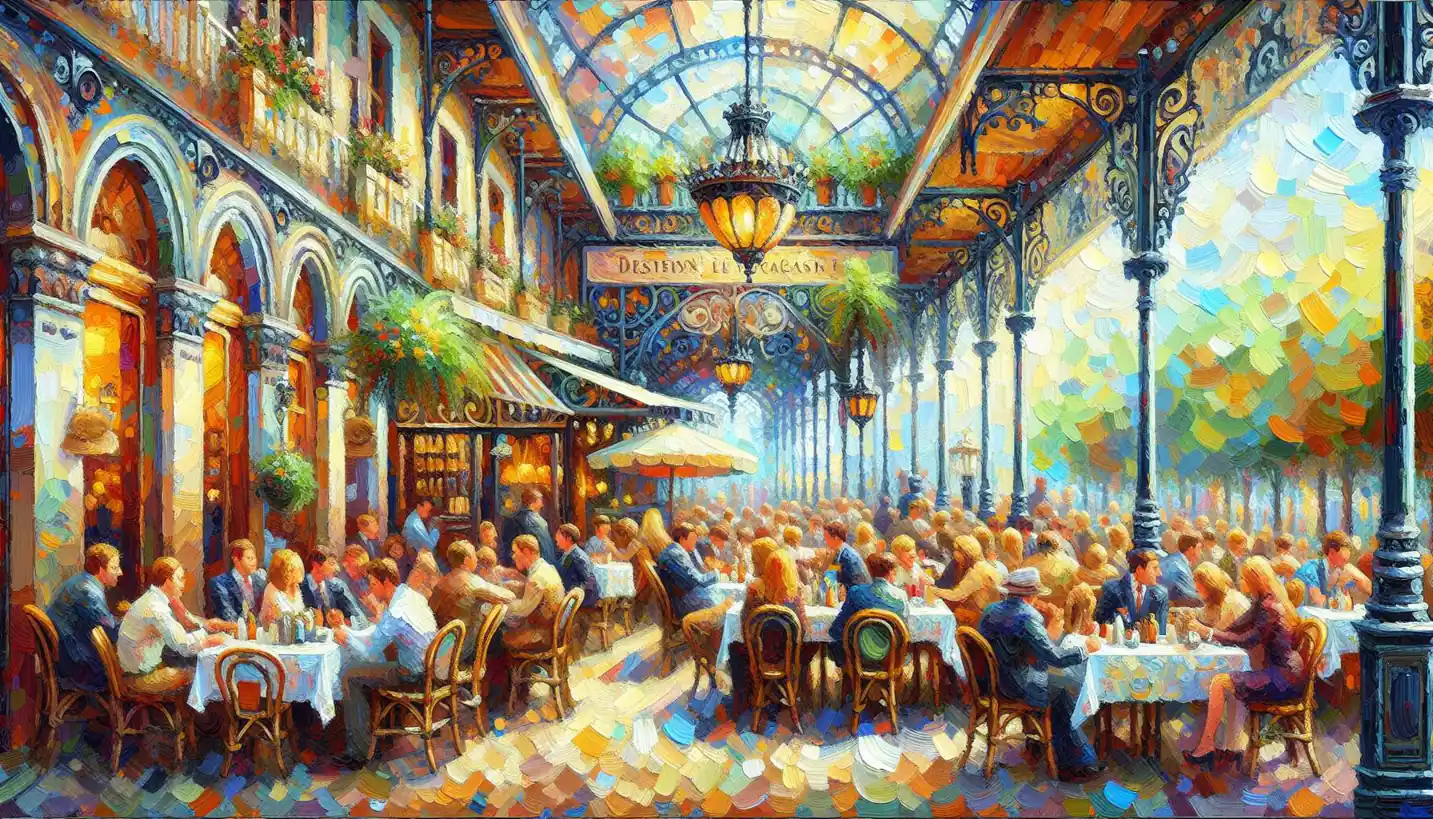· Art · 5 min read
LIDAR in AR: A New Era for Augmented Reality Art
LIDAR technology heralds a new era for augmented reality art, providing detailed depth perception for more immersive creations.

As technology marches forward, it’s fascinating to see how tools once reserved for scientists and engineers find their way into everyday life, especially in the art world. LIDAR, which stands for Light Detection and Ranging, is one such tool that’s revolutionizing augmented reality (AR) art. But what exactly is LIDAR, and how is it transforming the way we experience and create art?
Understanding LIDAR
To grasp the significance of LIDAR in augmented reality, let’s first unpack what LIDAR is all about. Imagine having a superpower that lets you “see” the distance to everything around you. That’s essentially what LIDAR does. It uses lasers to send out light pulses and then measures how long it takes for these pulses to bounce back after hitting an object. This data creates precise, 3D maps of environments.
LIDAR has been a game-changer in many fields, from autonomous driving to archaeological discoveries. Its ability to capture detailed information about surroundings in real time makes it perfect for devices like smartphones and tablets, where it can be used to enhance AR experiences.
How LIDAR Enhances Augmented Reality
Augmented reality is all about overlaying digital content onto the real world, and precision is key. LIDAR significantly boosts the accuracy of AR by providing detailed environmental mapping. Instead of guessing where a virtual object should appear, devices equipped with LIDAR can accurately place them, making the AR experience more seamless and realistic.
Think of it like adding a skilled director to a film set. With LIDAR, digital elements know exactly where to “stand,” how to interact with real-world objects, and how to maintain their place even if you move around. This spatial awareness allows for interactions that feel natural and enrich the viewer’s experience—essential for creating engaging AR art.
LIDAR in AR Art: Creativity Unleashed
The art world is no stranger to embracing new technology, and AR art is a thriving field where LIDAR is making waves. Artists can now create digital installations that respond to the viewer’s environment in real-time. Imagine an artwork that changes its form or color depending on the time of day or the number of people in the room. With LIDAR, such dynamic interactions become possible.
For example, an artist might design a virtual sculpture that only appears when someone stands in a specific spot. The sculpture could change based on the viewer’s movements, offering a unique experience to every observer. This level of interactivity fosters a deeper connection between the audience and the artwork, making each visit truly unique.
The Impact on Public Art Installations
Public art installations benefit immensely from LIDAR-enhanced AR. These installations can adapt to different environments and crowds, creating experiences that are at once personal and communal. Picture a digital mural that shifts in response to pedestrian traffic—busy days might see it animate with rapid movements, while quiet moments give way to serene transformations.
LIDAR allows artists to map intricate details of any space, regardless of scale. This means installations can fit perfectly within their surroundings, respecting architectural features and natural landscapes. By blurring the lines between the digital and physical worlds, artists can turn any location into a canvas.
Storytelling and Immersive Experiences
Beyond static visuals, LIDAR-powered AR art opens doors to storytelling and immersive experiences. Artists can create narratives that unfold as viewers explore an environment. A park, for instance, can host a digital history tour where virtual characters appear to recount events, or a garden can be inhabited by mythical creatures that react to human presence.
The possibilities are vast, only limited by the artist’s imagination. This technology not only enhances how stories are told but also makes sure they are more engaging and accessible by being part of our real-world settings.
Accessibility and Future Innovations
One of the remarkable aspects of LIDAR-integrated AR art is its accessibility. As more devices come equipped with LIDAR sensors, more people can experience this form of art. Artists can reach broader audiences without the need for expensive equipment or exclusive venues.
Moreover, the ongoing development in LIDAR technology promises even more exciting innovations. Enhanced scanning capabilities could allow for more detailed and dynamic interactions, while advancements in mobile technology will make AR art experiences even more widespread and immersive.
Challenges and Considerations
While LIDAR brings exciting possibilities, it’s not without challenges. Artists must consider privacy and data security, especially in public installations. Ensuring responsible use of environmental data is crucial to maintaining trust and safeguarding personal information.
Additionally, the cost and complexity of developing LIDAR-based AR applications can be a hurdle. However, as the technology becomes more mainstream and tools become more user-friendly, these barriers will likely diminish, encouraging more artists to explore this medium.
A New Dimension in Art
LIDAR is undoubtedly a powerful tool that is reshaping how we perceive and engage with art. By enhancing AR experiences with incredible precision, it allows artists to create works that are not only visual spectacles but also deeply interactive and personal. As LIDAR technology evolves, we can anticipate even more groundbreaking innovations in the world of AR art, unlocking new realms of creativity and expression.
So, the next time you come across an AR art installation, take a moment to appreciate the technology behind it. LIDAR is not just helping artists create; it’s inviting us into a living, breathing world where art and reality blend seamlessly, opening our minds to endless possibilities. What future innovations await in this dynamic blend of technology and creativity? The journey promises to be as intriguing as the art itself.



